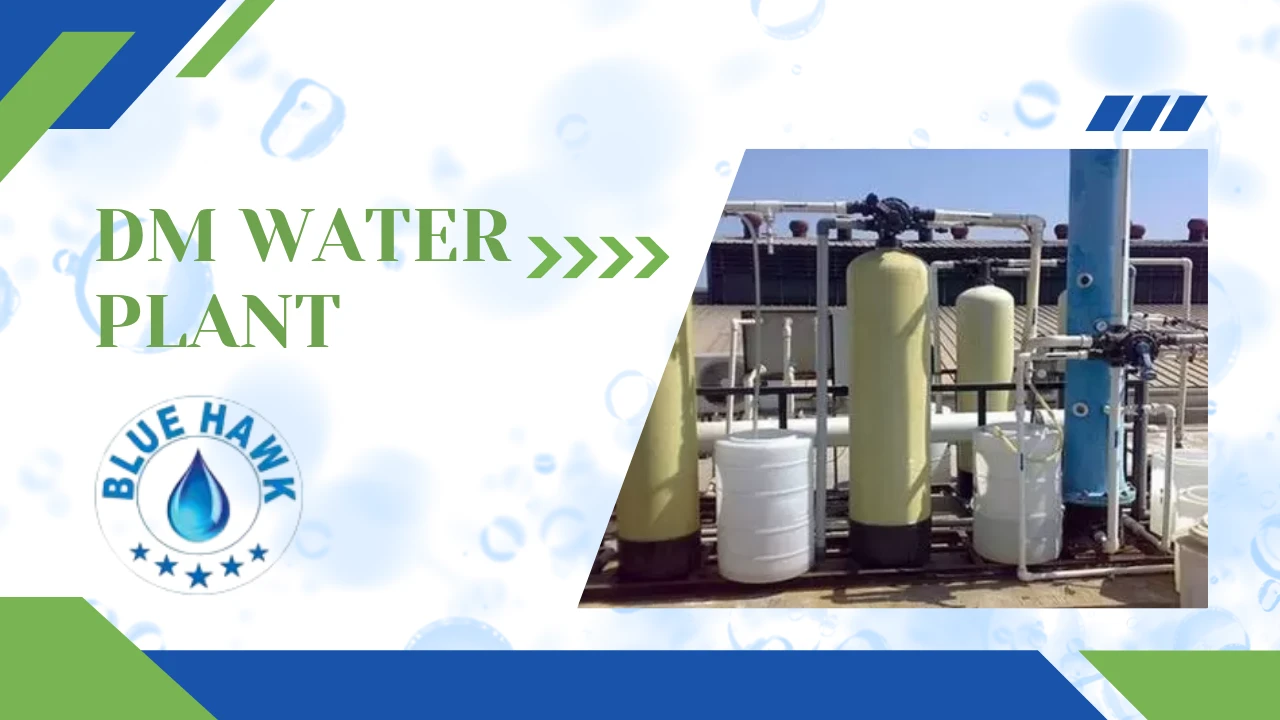Today, every industry requires clean and pure water. Whether it’s a pharmaceutical factory, a power plant, or a laboratory, pure water is essential everywhere. A DM (Deionized or Demineralized) Water Plant fulfills this need. This system removes all dissolved salts and minerals from water, providing completely demineralized water.
Yash Water is a leading company that manufactures and supplies high-quality DM Water Plants. Their plants are used with confidence in a variety of industries.
What is a DM Water Plant?
A DM water plant is a machine that removes all ions from water such as calcium, magnesium, sodium, chloride, etc. The water produced through this process is completely pure and mineral-free.
A mixed bed in DM plant is an advanced demineralization system that combines cation and anion exchange resins in a single column. This setup removes all ions from water to produce extremely high-purity DM water (demineralized water).
Working Principle of DM Water Plant
The working of a Mix bed DM Water Plant is based on ion exchange technology, where unwanted ions in the water are replaced with hydrogen (H⁺) and hydroxyl (OH⁻) ions to form pure water (H₂O).
Cation Exchange Unit:
Removes positively charged ions like Ca²⁺, Mg²⁺, Na⁺.
These are replaced with H⁺ ions.
Anion Exchange Unit:
Removes negatively charged ions like Cl⁻, SO₄²⁻, NO₃⁻.
These are replaced with OH⁻ ions.
Mixed Bed Unit (Optional):
A polishing stage combining both cation and anion resins to achieve the highest purity level.
Mix Bed DM Plant Design
Flow / superficial velocity
- For mixed beds in service mode, typical superficial velocity (SV) range: 2 – 8 m/h (use lower SV for high polishing performance, higher SV for larger throughput with some compromise on contact time).
- Formula: Vessel cross-sectional area A = Q / SV, where Q = flow (m³/h).
- Choose SV based on resin grade and required contact time.
Bed depth
- Typical mixed-bed resin bed depth: 0.6 – 1.2 m total (600–1200 mm).
- Deeper beds give better polishing and contact time; shallower beds reduce pressure drop.
Resin volume
- Resin volume V (m³) = A × bed depth (m). Convert to liters as needed.
- Typical resin mix by volume: 50:50 to 60:40 (Cation : Anion) depending on resin capacities and feed composition. The final design chooses a ratio to balance H+/OH− exchange capacity.
Head loss / pressure drop: Aim for low initial head loss (depends on distributor and bed depth). Check vendor curves; expect a few meters of water head at service flow. Provide allowance for fouling.
Backwash: Mixed beds are generally not backwashed during service (mixed resins would separate). Instead, use backwash before resin loading/regeneration if design allows resin separable zones. If using a layered approach (separate cation then anion), include backwash flow design (typical 5–10 m/h).
Mix Bed Regeneration Process
- In-place (on-column) regeneration: Inject acid then caustic through the mixed bed with valve sequencing and careful fractionation to avoid mixing regenerants. Requires complex valve logic, more regenerant consumption control and good neutralization of effluent.
- Off-line / external regeneration: Strip resins from vessels, regenerate in separate vessels (preferred for large plants / where chemical handling is a concern). After regeneration, thoroughly rinse and remix resins.
Mixed bed often regenerated by separating resins first (using water stratification or resin separators), regenerating in segregated columns, then recombining — this is more efficient.
Regenerant concentrations & contact times (typical guidance)
- Cation (SAC) regeneration: strong mineral acid (HCl or H₂SO₄). Typical strength for in-place: 2–10% w/w acid (depends on method). Contact times: 30–60 min.
- Anion (SBA) regeneration: NaOH (caustic). Typical strength: 2–8% w/w. Contact times are similar.
- NOTE: Exact doses depend on resin eq capacity, exhaustion level and rinse requirements — calculate from resin equivalent capacity and target regeneration stoichiometry. Also provide ample rinsing to reach target conductivity.
Rinse and quality targets
- Regeneration rinses to near-neutral pH and low conductivity before returning to service. Final conductivity target determines rinse volumes (often several bed volumes).
Applications of DM Water
- Pharmaceuticals and Biotechnology – For formulation and cleaning processes.
- Power Plants – Boilers feed water to prevent scaling and corrosion.
- Electronics Manufacturing – For rinsing semiconductor components.
- Chemical and Petrochemical Plants – In process water and dilution.
- Laboratories and Research Facilities – For analytical and experimental use.
Best DM Water Plant Manufacturer in India
DM Water Plant is an important part of modern industrial infrastructure where high-quality water is essential. By understanding its process and uses, industries can ensure improved productivity and equipment longevity.
Yash Water, with its proven expertise and advanced engineering, stands out as a trusted name as a DM Water Plant manufacturer. We are known for our best quality, durability and reliability of products. We are able to provide various capacities of DM Plant and also design customized solutions as per specific industrial needs.

